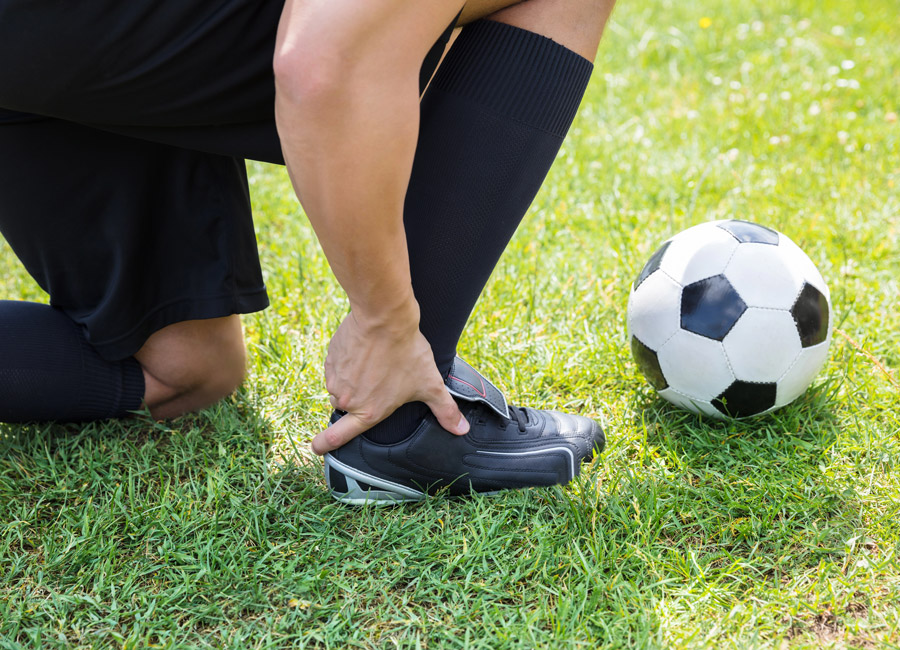ankle
Ankle: sports injuries, instabilities and joint wear
Ligament injuries: diagnosis and classification
Treatment options
- Minor ligament injuries are usually treated conservatively by immobilizing the ankle for a few weeks and stabilizing it with physiotherapy.
- More severe ligament injuries involving other structures (e.g. syndesmotic ligament, cartilage or bone) often require surgical treatment.
Chronic instabilities and ligament reconstruction
If instability persists, this can lead to degenerative damage in the ankle joint in the long term. For the anatomical reconstruction of the lateral ligaments, the body's own tendons (e.g. of the M. peroneus brevis or the M. graciliswhich is taken from the knee joint).
Injuries to anterior syndesmosis are often overlooked during initial treatment after an ankle sprain. However, the syndesmosis is a crucial stabilizer of the ankle fork.
- Acute syndesmosis injuries We stabilize it using a pulley system with metal plates.
- Chronic injuries are reinforced by additional body-derived materials (e.g. periosteum strips or tendon tissue).

Cartilage damage: diagnosis and causes
Treatment options
- Cartilage replacement material: In the case of localized defects, the damaged area can be body's own cartilage bone cylinders (so-called OATS cylinders). These are taken from low-stress areas of the knee joint and inserted into the defect zone of the ankle joint.
- Arthroscopic procedures: In the case of minor defects, the damaged area cleared out and with bone marrow stimulating procedures treated to stimulate the formation of replacement cartilage.
Aftercare
After a Relief phase of approximately 6–8 weeks can be achieved by the above-mentioned techniques Replacement cartilage tissue The choice of procedure depends on the Size and location of the damage and is decided individually.
Individual advice & state-of-the-art treatment methods
Minimally invasive & innovative surgical techniques
Quick return to everyday life, work & sport
Joint wear (osteoarthritis of the ankle): causes and symptoms
✔ Constant pain during exertion
✔ Rest and night pain
✔ Restricted movement
Treatment
- Fusion (arthrodesis): In cases of severe joint wear, stiffening the joint can help to permanently eliminate the pain.
- Ankle prosthesis: In certain cases, the joint can be replaced with a prosthesis to maintain as natural mobility as possible.
Special case: Soccer's Ankle
In case of long-term overload or beginning degenerative wear the body produces more bony growths in the joint area (osteophytes). This occurs particularly frequently in football players and is referred to as soccer's ankle. The bony growths can lead to painful restricted movement and are usually removed arthroscopically.

Your ankle in the best hands!
Get advice!
Make an appointment now for a personal examination and treatment:
+49-(0)89 4140-7840
sportortho@mri.tum.de
House 524
Ismaninger Str. 22
81675 Munich

